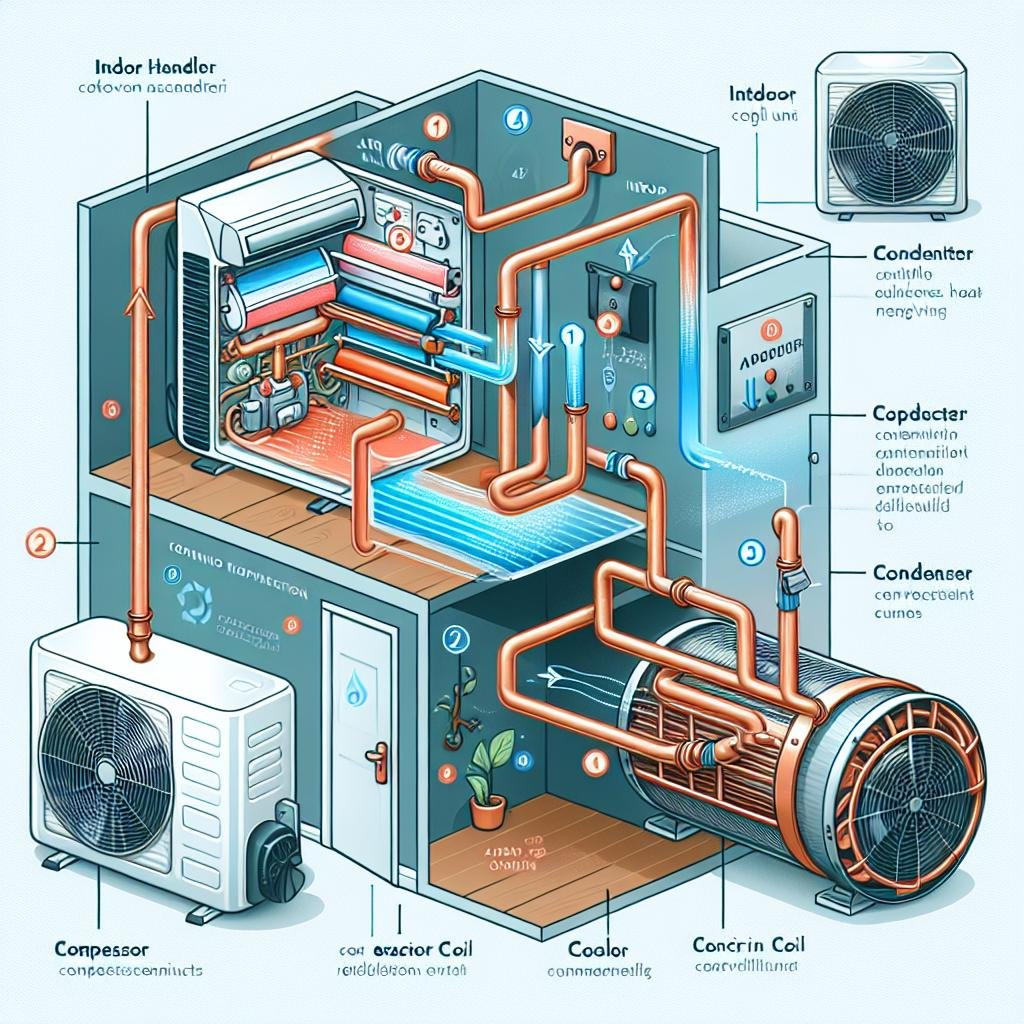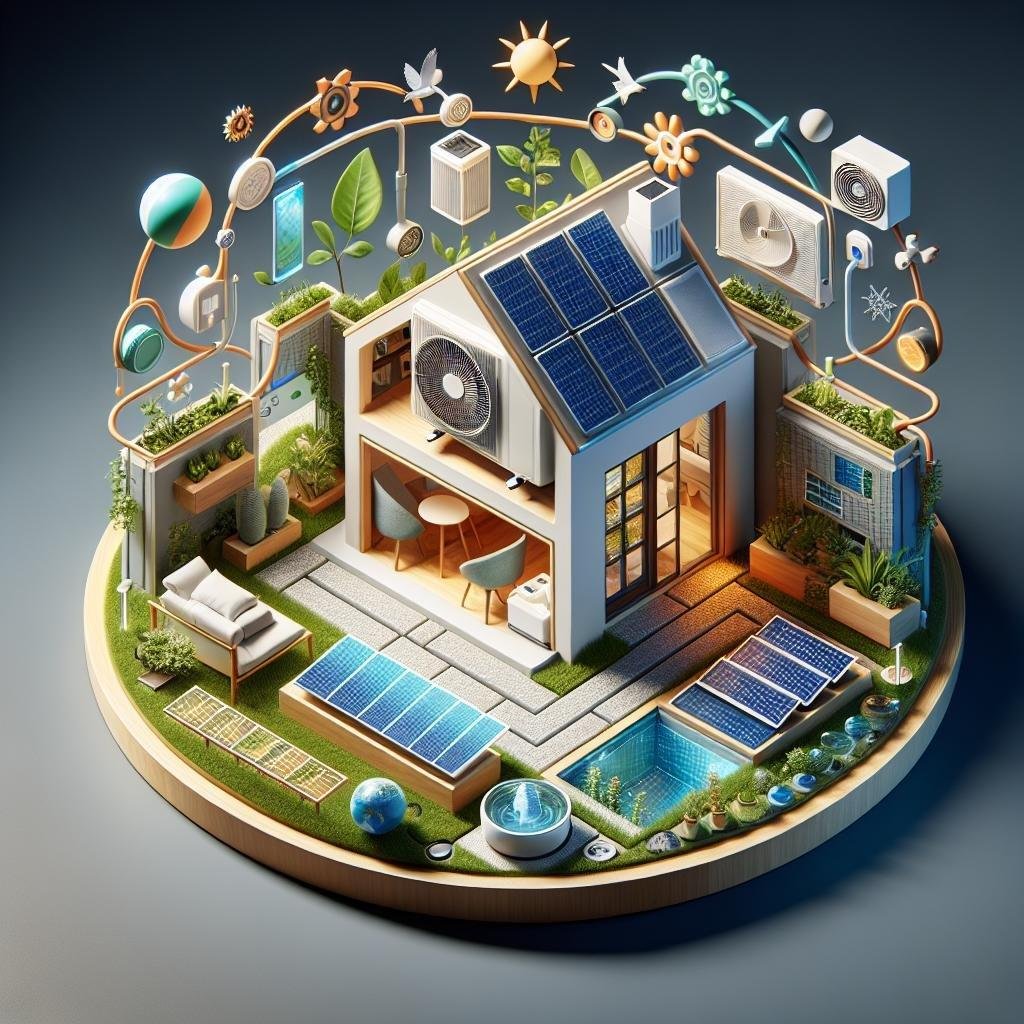Welcome to the world of home cooling options! As the temperatures start to rise, many of us are looking for ways to keep our living spaces comfortable without breaking the bank on energy bills. One option that has been gaining popularity in recent years is the mini split AC system. But is it truly the most energy-efficient choice for your home? Let’s dive in and explore the ins and outs of this cooling solution to help you make an informed decision.
Understanding How Mini Split AC Systems Work
Mini split AC systems, often lauded for their remarkable energy efficiency, operate through a straightforward yet ingenious design that consists of two primary components: an indoor air-handling unit and an outdoor compressor/condenser. What sets these systems apart is their ductless nature, meaning they eliminate energy loss typically associated with ductwork in traditional HVAC systems. The indoor unit, mounted typically on a wall or ceiling, draws warm air from the room and cools it down before recirculating it back into the space, while the outdoor unit expels the absorbed heat. This two-part mechanism not only streamlines the cooling process but also ensures that your home environment remains comfortably cool without undue energy expenditure.
Moreover, mini split systems feature zoning capabilities that allow you to cool specific rooms, or “zones”, independently. This personalized cooling can result in substantial energy savings, as you only use it where you need it. For instance, multi-zone systems can service several rooms, each with its own thermostat for tailored temperature control. Here’s a comparison to highlight how zoning offers benefits over traditional systems:
| Feature | Traditional HVAC | Mini Split |
|---|---|---|
| Ductwork | High energy loss | No ducts, minimal energy loss |
| Zoning | Limited, if any | Multi-zone control |
| Installation | More invasive | Less invasive |
Comparing Energy Consumption: Mini Split vs. Traditional AC Units
When it comes to energy consumption, mini split systems have a significant advantage over traditional AC units. One of the key factors is that mini splits operate without the need for ductwork, which eliminates energy losses commonly associated with ducted systems. According to the U.S. Department of Energy, duct losses can account for more than 30% of energy consumption in a central air conditioning system. This energy-saving feature alone makes mini splits an attractive option for homeowners looking to reduce their energy bills. Furthermore, mini splits provide zone cooling, which means you can cool individual rooms only when needed, offering greater control and potentially more savings.
| Feature | Mini Split | Traditional AC |
|---|---|---|
| Energy Efficiency | High | Moderate |
| Ductwork Required | No | Yes |
| Zone Cooling | Yes | No |
| Installation Cost | Moderate | High |
On the other hand, traditional AC units have their own set of benefits but often fall short in terms of energy efficiency. The installation process is more labor-intensive and costly, primarily due to the need for ductwork. While traditional units can cool an entire home, they tend to consume more energy because they lack the ability to focus on specific areas. Seasonal Energy Efficiency Ratio (SEER) ratings also tend to be lower for traditional units compared to mini splits. Over time, these factors accumulate, leading to higher electricity bills and reducing the overall efficiency of traditional AC systems.

Factors to Consider for Maximizing Efficiency
To achieve peak efficiency with a mini split AC system, it’s crucial to consider several key aspects. Proper sizing is paramount; an undersized unit will work overtime to cool your space, while an oversized one will cycle on and off too frequently, neither of which is energy-efficient. Placement plays a vital role too; installing indoor units in areas with optimal air circulation ensures uniform cooling without overburdening the system. Additionally, insulation quality significantly impacts how hard your mini split has to work — well-insulated spaces maintain desired temperatures more effectively.
Moreover, make the most out of advanced features that come with modern mini split systems. Inverter technology, for instance, allows the AC to adjust its power output in real-time, maintaining consistent cooling with reduced energy consumption. Look for units with smart thermostats and Wi-Fi connectivity to fine-tune settings remotely and maximize convenience. Don’t forget about maintenance, either — clean filters and regular check-ups can prevent minor issues from escalating, ensuring your system runs smoothly year-round. Together, these factors create a symphony of efficiency, giving you a comfortable home with minimal energy waste.
| Factor | Description |
|---|---|
| Proper Sizing | Ensures optimal performance and energy use |
| Placement | Strategic location for effective cooling |
| Insulation Quality | Reduces workload on the AC unit |
| Inverter Technology | Maintains consistent cooling efficiently |
| Smart Features | Promotes convenient and precise control |

Tips for Choosing the Right Mini Split System for Your Home
One essential factor to consider when choosing a mini split system for your home is sizing. The unit must be correctly sized for the room or area it’s intended to cool or heat. An undersized system will struggle to maintain comfortable temperatures, while an oversized unit may cycle on and off too frequently, leading to inefficiency and decreased lifespan. To find the right size for your space, consider these points:
- Room Size: Measure the square footage to determine BTU requirements.
- Insulation: Well-insulated rooms may require less power.
- Climate: Take into account the typical weather conditions in your region.
Another critical aspect is the energy efficiency of the mini split system. Look for systems with a high SEER (Seasonal Energy Efficiency Ratio) rating. Higher SEER values indicate better efficiency and can lead to substantial energy savings over time. Additionally, consider units with smart capabilities such as remote control via a mobile app, programmable thermostats, and energy-saving modes. Here’s a quick comparison of a few features that can impact efficiency:
| Feature | Advantage |
|---|---|
| Inverter Technology | Smoother and more efficient operation |
| Multi-Zone Capability | Customized temperature control for different areas |
| Energy Star Certification | Ensures compliance with energy efficiency standards |
Q&A
Q&A: Is a Mini Split AC System the Most Energy-Efficient Option for Your Home?
Q: Hey there! I’m considering upgrading my home’s air conditioning. Is a mini split AC system really as energy-efficient as people say?
A: Absolutely! Mini split systems are often touted as energy champs. Unlike traditional central air conditioning, they offer zoned cooling, which means you can cool specific areas of your home as needed. This tailored approach reduces energy waste and helps you save on those pesky utility bills.
Q: That sounds great! But do mini splits really make a big difference in energy savings compared to central AC?
A: You bet! Central AC systems tend to cool the entire house, even those unused areas, which isn’t the most energy-efficient approach. Mini splits, on the other hand, let you cool individual rooms. This precision helps cut down on unnecessary cooling and reduces overall energy consumption, often leading to substantial savings over time.
Q: I’m sold on the energy savings! But how about the installation process? Is it complicated?
A: Not at all! Mini split systems are relatively easy to install compared to central AC systems. They require a small hole for the conduit, so there’s no need for extensive ductwork. This streamlined installation process not only saves time but also minimizes disruptions to your home.
Q: That’s a relief! With all these benefits, are there any downsides I should be aware of?
A: Like any system, mini splits have their quirks. They can be more expensive upfront compared to window units or even some central systems. Also, the indoor units are visible on the wall, which some folks feel might clash with their interior decor. However, many find the long-term energy savings and comfort to be well worth these minor considerations.
Q: I can live with that! What kind of maintenance do mini split systems require?
A: Maintenance is pretty straightforward! Regularly cleaning the filters and checking for any blockages in the outdoor unit will keep your mini split running efficiently. It’s also wise to have a professional tune-up once a year to ensure everything’s in tip-top shape.
Q: Thanks for the insights! Anything else I should consider before making my final decision?
A: Just one more thing—make sure your home’s electrical system can handle the new mini split system, especially if you plan to install multiple units. Consulting with a pro can help you plan accordingly. Other than that, enjoy the comfort and savings your mini split system will bring!
Q: You’ve been super helpful! Looks like I’m ready to make the switch to a mini split. Thanks!
A: Anytime! Happy cooling and don’t hesitate to reach out if you have more questions. Enjoy your energy-efficient home!
To Wrap It Up
As you ponder the oasis of cool comfort that a mini split AC system could bring to your home, it’s clear that energy efficiency is just one of the many treasures in its chest of delights. While the answer to whether it’s the most energy-efficient option for your unique abode depends on factors as diverse as room size, insulation, and daily habits, one thing is certain: the journey to greener pastures has never been cooler.
So, dear reader, as you stand at the crossroads of comfort and conservation, may your choices be wise, your summers be cool, and your energy bills ever-surprising. Here’s to a breezy future, one split at a time! 🌬️❄️
Stay chilled and choose wisely!

